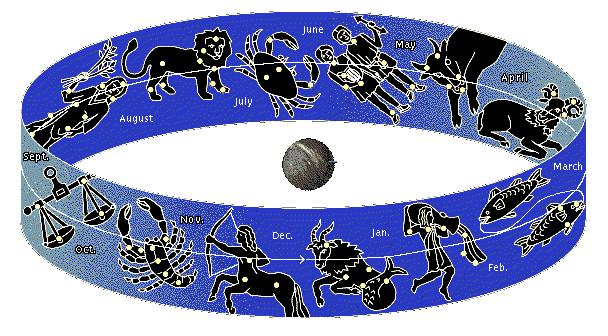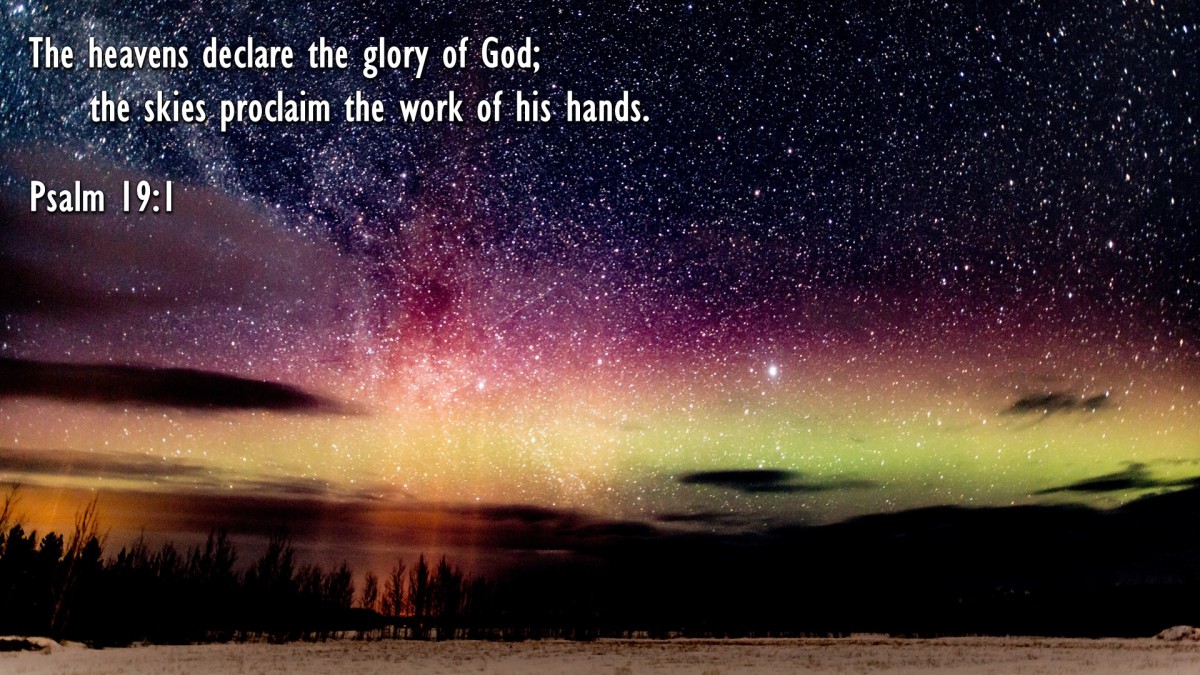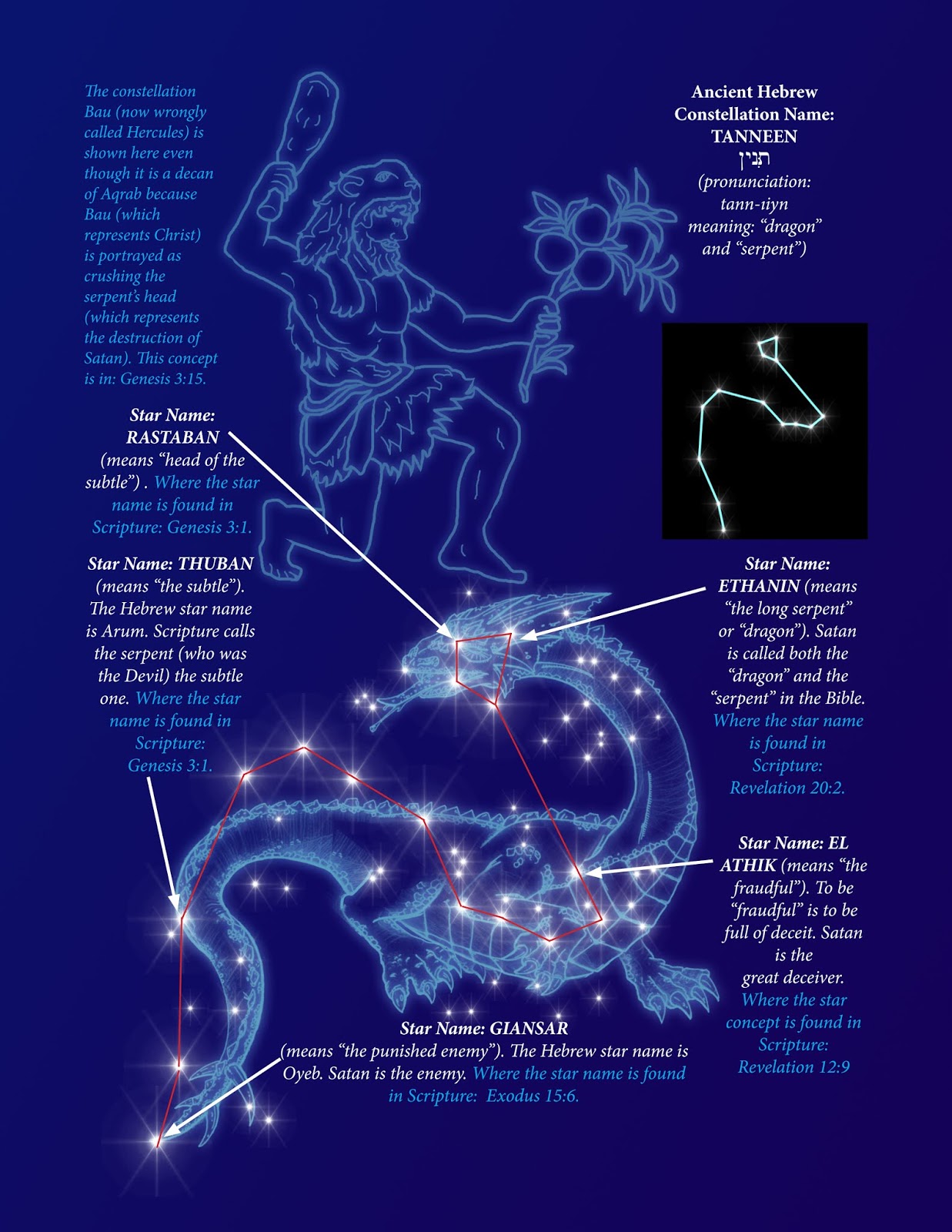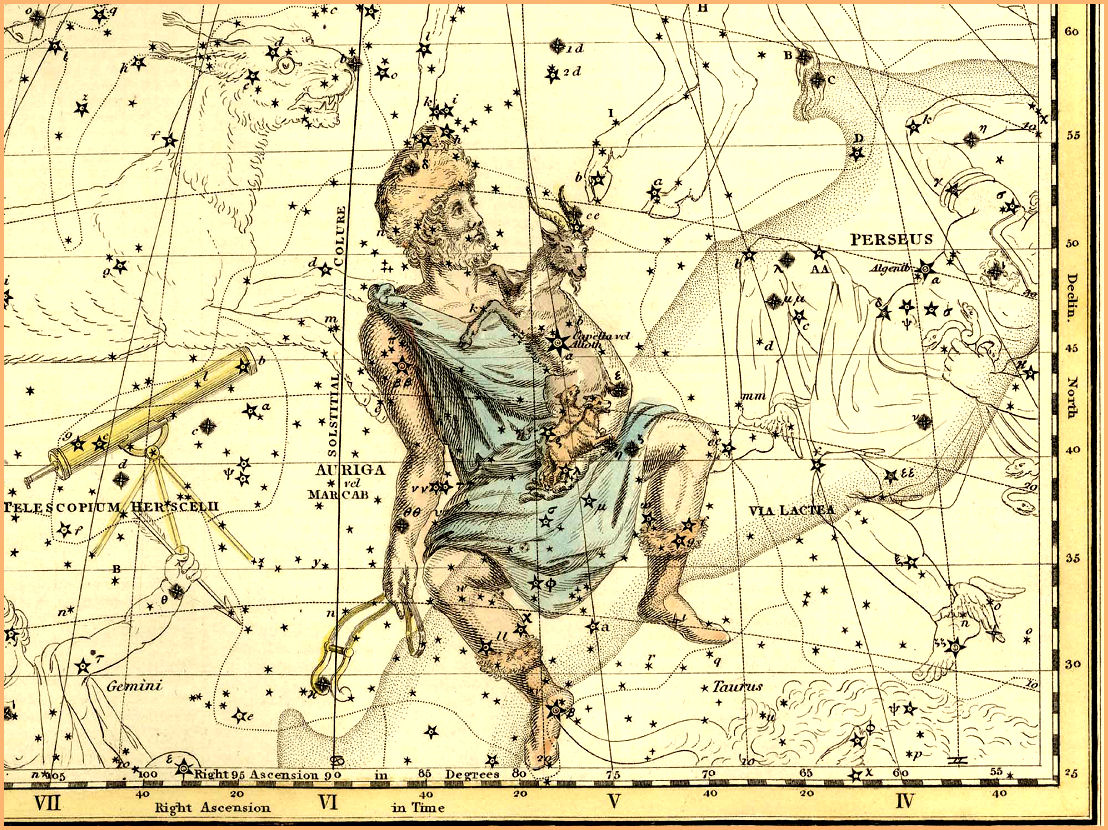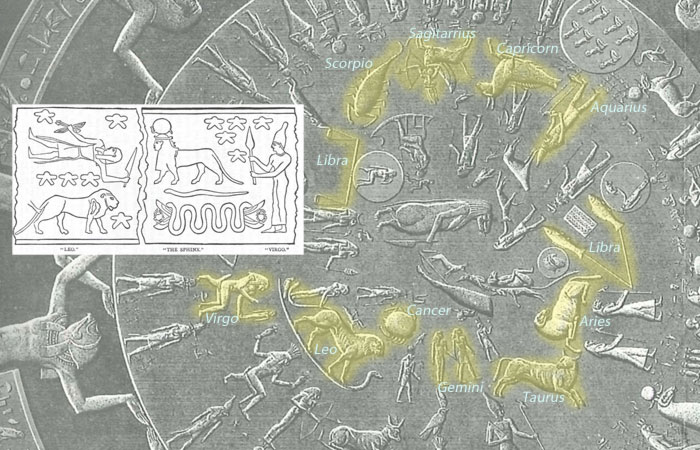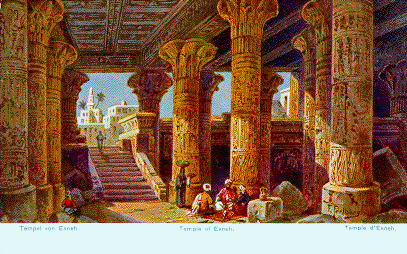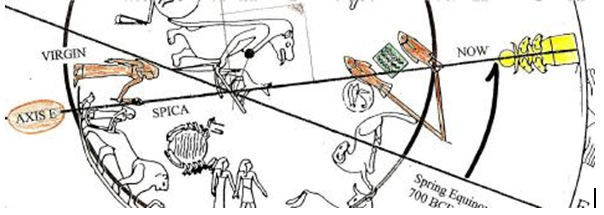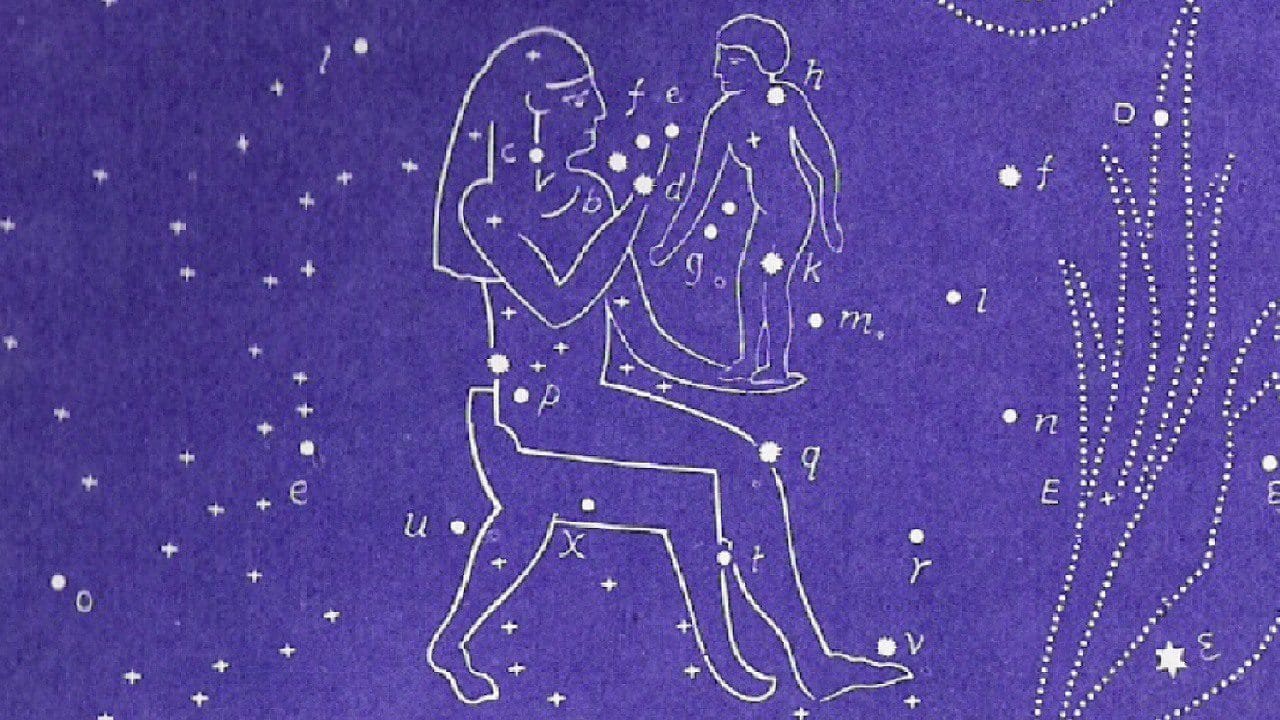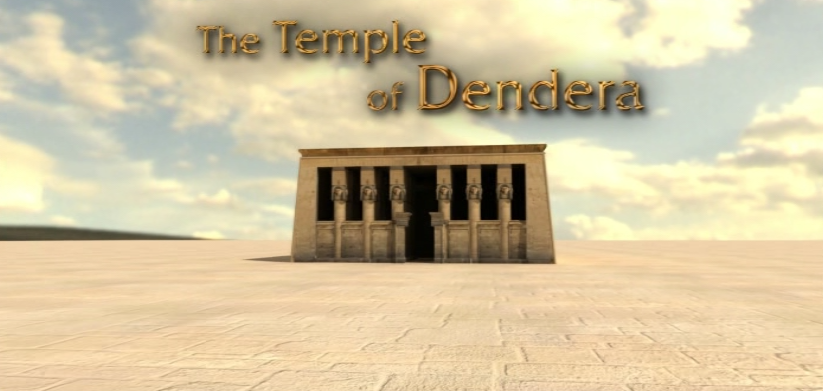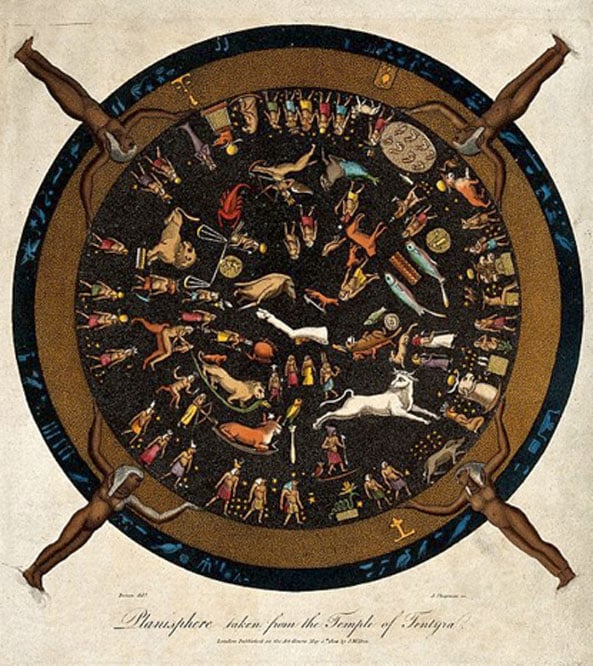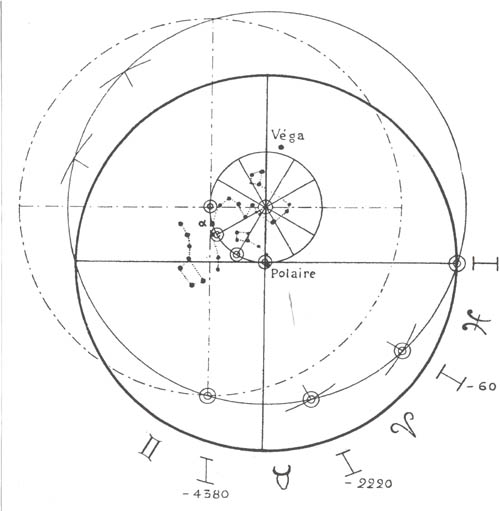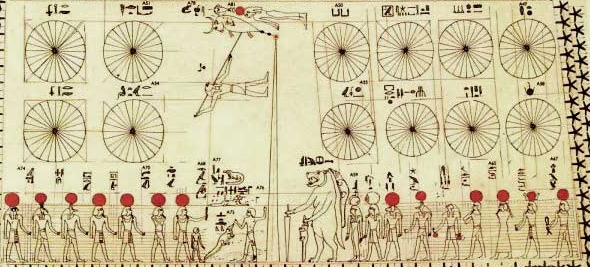
Witness of the Great Pyramid Star Shafts and the Birth and Return of Christ [Part 1]
This July 2020 blog is the sixth anniversary of the opening of our Bible Astronomy blog. In the time since we began compiling this Biblical Astronomy blog in 2014, we have noted an abundance of celestial evidence including signs marking the birth and return of Christ, with many parallels between the two. We have also documented a host of celestial signs supporting my proposal of a Celestial Prelude, where signs leading to Christ’s birth, are precedents directly pointing to specific signs marking his birth. Just as this pattern is discernible leading to Christ’s birth, so we also find indicators of it leading to his return.
As Celestial signs marking the birth of Christ took place in about a two year period between 3-1 BC, marked by a series of signs in 5 BC, so the signs of Sept. 2017 were presaged 2 years earlier with Heavenly signs in 2015. At the end of June 2015, we saw the first of 3 Jupiter-Venus Conjunctions in Leo, that took place before the conclusion of the 2014-15 Blood Moon tetrad. The first union of these two brightest planets recalls their fantastic conjunction on June 17th 2 BC, that was part of a series of signs marking Christ’s birth, with the Star of Bethlehem.
Sept. 17th, 2015 was a key date since it marked not only the Rev. 12 sign of the Sun clothing Virgo with the Moon at her feet, but also the first of 2 Mercury-Spica conjunctions in Virgo within 6 weeks, the 2nd one on October 29th. The Sept. 17th, 2015 sign of Rev. 12, takes place two years before the Great Wonder of Rev. 12 was repeated in the heavens in Sept. 2017, as seen at the birth of Christ. Mercury-Gabriel, the messenger archangel announced the nearness of the Lord Jesus Christ, returning FOR his Saints in the Church of the Body of Christ. The star Spica, the brightest star in Virgo, embodies the Promised Seed-Jesus Christ in his four-fold ministry as King, Son of Man, Servant and Son of God, as seen in the Four Gospels; Matthew, Mark, Luke and John.
The Birth of Christ was first promised in the initial Messianic prophecy in God’s Word in Gen. 3:15. This is the alpha prophecy in Genesis, the Bible’s first book which is complemented by the Omega–Rev. 12 sign, as Scriptural bookends for the Word of God in the Flesh–Jesus Christ the Promised Seed. In viewing the Genesis 3:15 Planisphere Axis in Figure 1 below, we find clear evidence not only of the Gospel in the Stars, but also for the prophetic monuments of the Giza Plateau. As the Great Sphinx embodies the alpha-omega signs of the ecliptic while prophesying of Christ’s birth, so the Great Pyramid also is aligned with Bethlehem and Jerusalem by its geographic Christ angle 26.5 degree axis, known as the “Bethlehem line.”
The Gen. 3:15 Planisphere axis however, is an astronomical axis that embodies mankind’s transcendent hope in the Coming Redeemer, Jesus Christ. Our introduction of this planisphere axis in last month’s June 2020 blog, is a detailed account of its primary elements, but our review of it in this month’s blog will focus on the major aspects of its dominant theme. This references Genesis 3:15 as the 1st Messianic prophecy in God’s Word, and as such is a key reference, worthy of a closer look as a basis for and foundation of the Gospel in the Stars, and the birth of Christ.
Gen. 3:15 And I will put enmity between thee and the woman, and between thy seed and her seed; it shall bruise thy head, and thou shalt bruise his heel.
Here we have a reference to the seemingly ageless struggle between light and darkness, embodied in the serpent and its seed, versus the Woman with her seed. God is telling the serpent that the seed of the woman who is Jesus Christ, would bruise the serpent’s head, indicative of the fatal blow that Christ inflicts on Satan, as opposed to the serpent stinging Christ’s heel, showing Christ’s sacrifice, that freed all mankind from the serpent’s curse. This story from Gen. 3;15 is depicted in astonishingly powerful ways in the Gospel in the Stars, as seen in this Planisphere Axis below.
Figure 1. Genesis 3:15 Planisphere Axis.
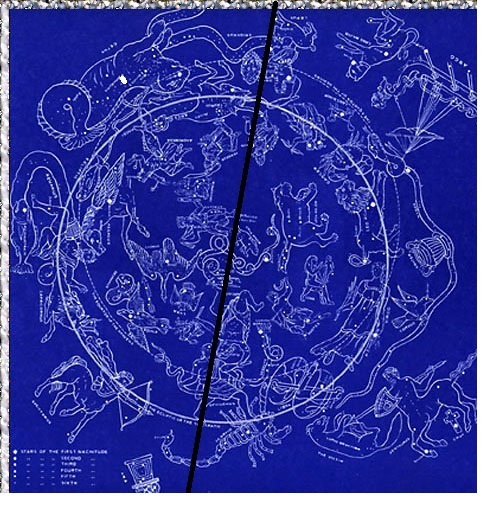
This “Genesis 3:15 axis” extends through the North pole intersecting a number of constellations and notable decans that relate aspects of the Genesis 3:15, theme from various teaching viewpoints. Opening at the bottom of the planisphere, we find the Scorpion constellation–Scorpius, whose prominent tail stinger is positioned under the heel of Ophiuchus the Serpent-bearer constellation, who is engaged in a struggle with the serpent. The axis intersects the star in Ophiuchus‘ heel, called Saiph, in the LXX Greek meaning “bruised.”1 This is the same Greek word used in Gen. 3:15 for “bruised,” while Ophiuchus’ other leg is poised over the head of the Scorpion, showing the fatal blow crushing the enemy. This enlargement of Ophiuchus wrestling the serpent for Corona-the Crown of Dominion, while the Scorpion stings his heel, in Figure 2 tells us how our spiritual adversary is pictured both as a serpent and a scorpion, in conflict with the man, fitting three Scriptural elements of the star picture. In Hebrew the Scorpion is Akrab, meaning war or conflict; [Ps. 91:13] with the man. 2
Figure 2. Ophiuchus the Serpent-bearer, over Scorpius.
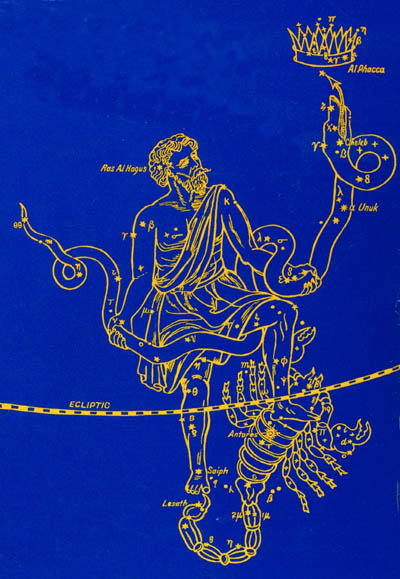
If we now look at the other end of the Gen. 3:15 Planisphere Axis, we find amazingly that it intersects Orion, specifically at the star in Orion’s foot named Rigel, meaning “the foot that crushes,” which is fitting since it is pictured crushing the enemy. The main star in Orion’s other leg incredibly is “Saiph” the same word for “bruised“ we saw in Ophiuchus that is also used in Gen. 3:15! 3 Not only do we find both ends of this amazing Planisphere axis agreeing with the same star name tied to Gen. 3:15, but before the axis reaches Orion’s foot, it intersects the bright star in Orion’s shoulder called Bellatrix, meaning “swiftly destroying,” pointing to the swift destruction of the enemy at the hands of the Lord Jesus Christ. 4
Job 38:31-33
31 Canst thou bind the sweet influences of Pleiades, or loose the bands of Orion? 32 Canst thou bring forth
Mazzaroth in his season? or canst thou guide Arcturus with his sons? 33 Knowest thou the ordinances of heaven? canst thou set the dominion thereof in the Earth?
Figure 3. The decan of Orion, with his foot over the Hare initiating the River of Judgement.
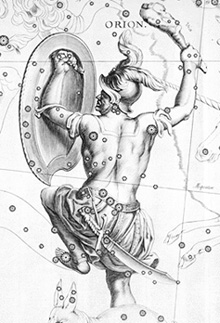
The original meaning of Orion is “coming forth as light.” The same word is used in Genesis. 1:17 and Isa. 60:1, referring to the light of the celestial luminaries. This light is both physical in Creation and spiritual as we trace the meaning and usage of these ancient star names, both in God’s Word and historical sources.
The linking of Christ’s identification with Ophiuchus and Orion in the Celestial Gospel, is supported in the obvious parallels in this stellar depiction of [Gen. 3:15.] As we let the stars speak, their witness of truth shines through any idols or star myths telling alternative stories. Frances Rolleston “observed that although in most charts Orion’s foot rests upon a hare, in at least one ancient Indian star chart there is snake in place of the hare. Presumably, this snake has bitten, or bruised, Orion’s heel, but he is crushing the serpent’s head in fulfillment of the first Messianic prophecy (Genesis 3:15).”5
Of course, this depiction of a serpent instead of a Hare is not limited to Indian zodiacs, but was also the case in the Dendera zodiac below, along with Persian zodiacs as well. 6 In the Dendera Zodiac’s version of Orion, in red seen beside Taurus the Bull in orange, with serpent underfoot and bird of prey also above the serpent’s head, descending with extended claws.
Figure 4. The Dendera Zodiac version of Orion over a Serpent instead of a Hare.
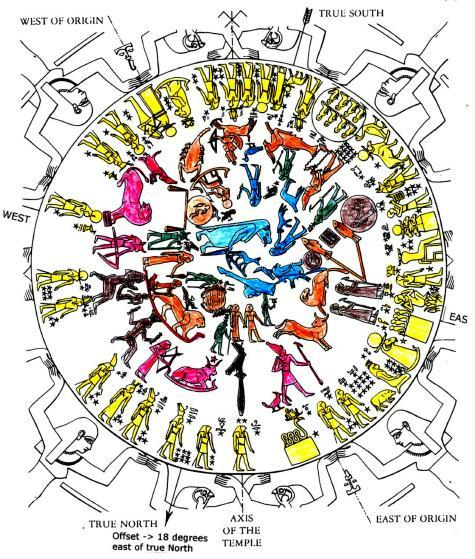
This image agrees with Seiss, showing both the Persian and Egyptian zodiacs, including the image of the serpent under Orion’s foot, caught in the claws of a hawk or eagle. 7 As we have seen in one of the most ancient planisphere’s– the square Dendera Zodiac, as found with its depiction of the Great Sphinx, but it is also a uniquely wonderful source for the identification of ancient decans, showing Lepus the “hare,” as a serpent.
Since the Gospel in the Stars is a pictorial representation, that parallels God’s Word, at times they tell a composite story of the truth of Christ. This axis is a good example of a composite pictorial depiction of Gospel truth, that is backed up by the meanings of the individual star names in the constellations and decans of these star pictures. The combined image of this Gen. 3:15 Axis not only presents 3 heavenly giants in combat with serpentine enemies, but there is also a forth decan on this axis shown taking the central star of the heavens away from the dragon’s control. Once the serpent replaces the Hare from later zodiacs, this Gen. 3:15 axis shows a powerful unified image in multiple constellations, all centered around the Gen. 3:15 theme.
Figure 5. Draco and Cepheus at the North Pole.
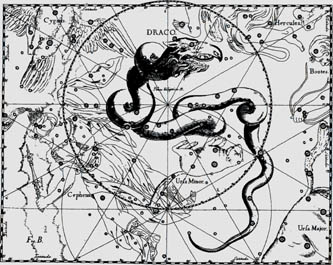
The fourth decan referred to above is Draco the dragon, seen in Figure 5 above, with Hercules’ Foot above its head, inside one of the circles of the Northern Polar Venn Diagram. This is pictured astronomically as the dynamic equatorial pole slowly moves around the static pole of the ecliptic, at the center of the upper circle. The common area between these overlapping polar wheels we find as a vesica of the Venn Diagram. This gives us another viewpoint of the precession of the poles, as the equatorial pole shifted from Thuban, in Draco’s tail to Polaris of Ursa Minor over the past 5000 years. This fulfills the promise of the coming redeemer, as our Gen. 3:15 axis passes through the current pole star Polaris, seen between the feet of Cepheus, the Crowned King, [Eph. 1:20-22]. This celestial image of the King of kings is realized and fulfilled in Christ Jesus, who now presides over the central star of the heavens, formerly under the dominion of the Dragon. Within this Polar circle, we find a triangle that encloses the Little Bear of Ursa Minor. The Triangle roughly consists of the Ecliptical pole at the center of this upper circle, along with two pole stars. One is Thuban the former pole star in the Dragon’s tail on the circle’s perimeter at the upper right corner, and the other is the current pole star Polaris, at the lower-left corner. As we find in Figure 6 below, the Pole star marked Al Ruccaba, is under the foot of Cepheus, meaning “the Branch,” 8 exerting his authority over all Creation. Thus the man’s wounded foot has become the instrument of the serpent’s destruction, not only seen in his crushing fatal blow to the serpent’s head, but also is witnessed in the outcome of Ophiuchus’ struggle with the serpent for the Crown [in Fig.2] of Dominion, in the crowned King Cepheus seated, reigning over the North Pole.
Figure 6. The 3 Belt stars of Orion reflecting the 3 Pyramids of Giza. 9
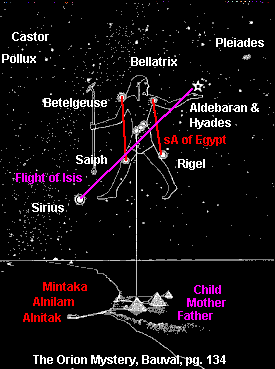
As Scripture teaches the Great Pyramid has much to say as one of the oldest monumental witnesses of Jesus Christ on planet Earth. The Fig. 6 graphic above shows the Great Pyramid’s geographical position mirroring the star Al Nitak in Orion’s Belt. If one were at Bethlehem at the time of Christ’s birth looking up to the lower belt star of Orion (Al Nitak—the wounded one) at meridian, the angle of that star above the horizon would be at the same angle as the Great Pyramid itself—51 degrees and 51 mins. 10 If true, this is added evidence to the Pyramid’s existing “Bethlehem line” linking to the birth of Christ. Other star programs give different conclusions about the position of Al Nitak at the time of Christ’s birth, but this is not the only Great Pyramid witness we are interested here. Not only do we have the “Orion Correlation Theory” with the stars of Orion’s belt, aligning with the Pyramid’s of the Giza complex, but the witness evident in Figure 5 above, of the precession of the pole star from Thuban of Draco to Polaris of Ursa Minor, is also referenced in the Great Pyramid’s Star Shafts, as we find below!
Figure 7. Aligning the Star Shafts of the Great Pyramid. 11

The first thing to note about these 4 Great Pyramid Star Shafts is that 2 originate in the Queen’s Chamber
and two also come from the King’s Chamber, with its Southern shaft aligned on Al Nitak in Orion’s Belt, and the northern shaft aligned on Thuban of Draco at its upper culmination. The Pyramid’s Descending shaft is aligned on Thuban’s lower culmination, showing Lucifer’s demise headed towards the pit at the bottom of this passage, [Isa. 14:15, 19]. Sir John Herschel calculated that Thuban was clearly visible from the bottom of the Great Pyramid’s Descending Passage at Thuban’s inferior culmination, when its circumpolar orbit was at its lowest. Piazzi Smyth, Astronomer Royal for Scotland also calculated Thuban was 3 degrees 43 min. from the pole at its lower culmination in both 2123 BC and 3440 BC. 12 Beyond this, Piazzi Smyth surmised that if the Great Pyramid’s foundation containing the pit in its bedrock, was built on the autumnal equinox in 2170 BC, when Thuban was at the meridian below the pole, Alcyone of the Pleiades was also crossing the meridian above the pole. 13 Could this be a reason why the Pleiades & Orion are always listed together in the Bible? [Job 9:9, 38:31 Amos 5:8]. It gives one pause to consider, but after Piazzi Smyth’s reckoning, Percival Lowell in 1912, calculated that the “Descending Passage of the Pyramid was oriented to a point 3 degrees 34′ below the pole, the location which Thuban would have occupied, allowing for refraction some 645 years before or after its closest approach to the true pole.”14 Like Piazzi Smyth, Lowell also computed two potential dates for Thuban to occupy this position, with an updated slight revision yielding 3475 BC and 2185 BC. Lowell pointed out that “the more recent date is negated by what we know of Egyptian History, and we are thus left with the other”-[3475 BC] as a better candidate for the construction of the Great Pyramid. 15
Since this astronomical evidence involving the Great Pyramid from Herschel, Smyth and Lowell is incompatible with the orthodox Egyptian chronology of the 4th Dynasty under Khufu [2700-2600 BC], we should look at other archaeological and historical evidence that may support the highly accurate Great Pyramid astronomy. Some of this evidence is seen in the Great Sphinx, which was built as part of the Giza master-plan including the Pyramids, the causeways and the Great Sphinx, which is a developing concept as our narrative proceeds on the history of these famed monuments of ancient Egypt. The Inventory Stela provides strong evidence, by Khufu himself, that he was not the Great Pyramid’s builder, and that the Pyramid and Sphinx, already existed during his reign. Egyptologists like James H. Breasted, included the Inventory Stela in his official Fourth Dynasty list of artifacts, stating that it “bore all the marks of authenticity.” Also, the French Egyptologist Gaston Maspero whose popular work, “The Dawn of Civilization,” stated that this stela was indeed a factual record of the life and deeds of Khufu. 16
With the exception of a few die-hards, most egyptologists consent to the accumulating body of archaeological and geological evidence, indicating that the Great Sphinx dates much older than the 4th Dynasty, and that the Sphinx was only restored by Chephren, not built during his reign. Added evidence from the ‘Inventory Stele‘ uncovered near the Sphinx in the 19th century relates that Pharaoh Cheops/Khufu, Chephren’s predecessor – ordered a temple built beside the Sphinx, meaning the Sphinx already existed at this earlier time, and thus was not built by Chephren. Since the astronomical elements of the Dendera Zodiac that inspired the Great Sphinx must predate it, we can see how the ages of the Dendera Zodiac and the Great Sphinx are inseparably joined, giving us a truer idea for the ages of these monumentally intertwined ancient artifacts.

In building the Great Sphinx’s adjoining temple, quarried stone blocks of over 200 tons were used, with some of this Sphinx temple masonry matching stone-work in building the Pyramids. This includes the causeway link-ing the Pyramids to the Great Sphinx, showing the relation between these uniquely historic monuments on a number of levels. It is logical that some of the quarried blocks were used to construct the temple, as the Sphinx was carved out of nearby existing rock. It also suggests a master-plan for the blueprints in building these elements of the Giza Plateau including the Sphinx, its temples and the Pyramids. The masterplan idea for the Giza Plateau was shown to be based on the “Christ angle” of 26.5 degrees, which not only happens to be the slope angle of the Great Pyramid’s Ascending and Descending Passage’s, but also was the alignment key for the entire Giza Plateau itself. 17
This is noteworthy since only the Great Pyramid, of all Egypt’s pyramids, was built with ascending and descending passages, which becomes more interesting as we take note of the related planetary alignments on Rosh Hashanah in 2017, marked by the Great Pyramid. The southern shaft of the Queen’s Chamber points to Sirius the Dog Star and brightest star in the sky. The Queen’s Chamber North shaft is aligned on the star Kochab of Ursa Minor, holding the same polar stars found on the Gen. 3:15 axis in Fig. 5. Ursa Minor is where we find the pole star today–Polaris under the feet of Cepheus, the Crowned King. This stellar image of the King of kings is fulfilled in Christ Jesus, who now rules over this central star of the sky, formerly Thuban under the dominion of the Dragon- Lucifer in his first estate. This documents a transition in spiritual power from Lucifer the fallen Morning Star, who was previously the prince and leading archangel over all angels of heaven, until iniquity was found in him, with his treacherous failed coup against the Heavenly Father, to Christ the ascendant Morning Star, who is now seated at the right hand of the Almighty, [Eph. 1: 19–23]. This story of the fallen Morning Star is also related in the Star Sirius-the Prince, as we will see in Part 2 of this study.
The dual alignment of Thuban below the pole with the Pleiades above the pole in 2170 BC, calculated by Piazzi Smyth, not only supports the key application of the autumnal equinox related to Rosh Hashanah, as we will see below, but also reveals an important point about how the Pleiades witnesses to the fall of the first Morning Star–Lucifer. [Isa. 14:12]
In China’s astronomical records, the Pleiades star cluster was among the earliest of Lunar houses on record, dating to 2357 BC, when the star Alcyone in the Pleiades was near the vernal equinox. 18 The 7 stars of this famed cluster are identified by Job [9:9, 38:31] and referred to collectively as a “heap or accumulation, and the congregation of the judge or ruler,” said also to be referenced in Rev. 1 as a “mystery.” Since the Mystery can refer to the spiritual body of Christ and the congregation of the church of the ruler or head of this church, who is Christ, this is a key aspect of the Mystery, which was not revealed before the day of Pentecost in 28 AD. But what about the relationship between Christ and the angelic realms? Rev. 1:20 refers to the angelic order in relation to Christ and the 7 churches in his right hand.
Rev. 1:20
20 The mystery of the seven stars which thou sawest in my right hand, and the seven golden candlesticks. The seven stars are the angels of the seven churches: and the seven candle-sticks which thou sawest are the seven churches.
Figure 8. The Pleiades Star Cluster
![[AAO Photograph]](https://www.naic.edu/~gibson/pleiades/ukschmidt/pleiades_ukschmidt_clean_names.jpg)
Now that the ascended Christ has supplanted the fallen Morning Star, he inherited rulership over the remaining choirs and cohorts of the angelic hosts previously ordered under Lucifer. This is part of the mystery of the seven stars, of angels held in the right hand of Christ, reminds us of the divine seven-fold pattern of the order of Cherubim according to their regular distribution around the four colored curtains of Tabernacle walls of both the Holy Place, and the Holiest of all. As we find this pattern in the earthly Tabernacle, so we also find it in the Heavenly Tabernacle, as Rev. 15:5-8 reveals, as seen in Part 1 . [cp. Rev. 8: 2]
The pattern of the 7 angels of God in relation to the four “beasts” or living creatures, depicting the Four
Cardinal Directions is upheld in the heavenly Tabernacle even as we see in its earthly model. This 7 x 4 pattern yielding 28 Lunar Mansions relating to the lunar cycle, aligned with the solar cycle, evident also in structure of the Tabernacle. The enemy continues to adhere parasitically to the original order set down by the Almighty, in ordering and marshaling his legions of fallen angels. As we find the pattern of seven repeated in the fallen angelic orders, we also find an image of “four beasts” resembling the “dragon decans” or serpent monsters [Draco, Hydra, Cetus, & Serpens] in the starry constellations of the ecliptic, not to mention the Gen. 3:15 axis in the night sky.
This mystery of the seven stars also includes the Angel’s first estate prior to their revolt, when Lucifer as the Bright and Morning Star led the angels as Morning stars and sons of God, in their collective shouts of joy, praising the Almighty, [Job 38:7, Isa. 14:12-20, Ezek. 28:12-19]. But once iniquity was found in Lucifer, he was cast out of heaven taking 1/3 of the angels down with him. [Rev. 12:7-9]. The Prophet Amos reminds us to;
“Seek Him that made the seven stars and Orion, and turned the shadow of death into the morning, and made the day dark with night: that called for the waters of the sea, and poured them out upon the face of the earth: The Lord is his name …” [Amos 5:8] KJV
We find hints of this in Milton’s description of Creation at the dawn of the world, in Paradsie Lost; where he says of the Sunrise,
the Dawn and the Pleiades before him danc’d, shedding sweet influence…19
“He had in His right hand seven stars, out of His mouth went a sharp two-edged sword, and His countenance was like the sun shining in its strength.” [Rev. 1:16]
This reference in Rev. 1:16 is certainly reminiscent of the helical rising of the 7 stars of the Pleiades, as seen in the Chinese and Egyptian Lunar Mansions. There is a legend linked to one of these seven stars, that was lost in infamy. The Poet Aratos wrote;
As seven their fame is on the tongues of men, though six alone are beaming on the eye… 20
This story fits the narrative of the fallen arch-angel Lucifer, who is no longer numbered among the Heavenly angels, having lost his initial place of honor. [Isa. 14:12, Rev. 12:7-9]
According to Daniel Matson, he explains the importance of viewing the autumn equinox instead of the spring equinox in this context, on his website;
“Robert Bauval first suggested the Orion Theory in his 1994 book, “The Orion Mystery.” His theory is that the Pyramids which he designates as Khufu, Khafre, and Menkaure, based on the idea that these pyramids were built in the reigns of these Egyptian Pharaoh’s, are aligned depicting the belt stars of Orion—meaning, if one looks south, the Great Pyramid (Khufu) is represented by the lower left belt star known as Al Nitak, and the Great Pyramid is the northeast pyramid. This is logical since viewing Orion at meridian means, one must look south. However, this Orion Theory puts pyramid construction at 10,500 BC since it holds to a vernal equinox scenario, where Orion is at meridian during dawn at the onset of spring.” 21
Figure 9. The Great Sphinx facing due east with Orion & Sirius rising at its lowest point closest to the Horizon. 22

As Matson states;
“The prophetic view taken here, is that the Giza pyramids were built looking forward down the corridors of time. This requires a view towards the other equinox, at the beginning of autumn when Orion will be at meridian during dawn.”23 This is supported also by the orientation of the Great Sphinx looking due east to the junction of Virgo/Leo at sunrise of the autumnal equinox. About 2000 years ago Orion (Al Nitak) hit the dawn-meridian in its heliacal rising, also the target of the Southern star shaft of the King’s Chamber, on August 26th, coinciding with the meridian passage of Kochab of Ursa Minor, aligned with the Northern star shaft of the Queen’s Chamber. Presently this alignment is on September 20th due to the precession of the equinoxes, making it was quite close to the Autumn Equinox in Sept. of 2017 when the signs similar to Christ’s birth were seen again, as we documented in the opening of this blog. This coordination of star alignments specifically marked by the Great Pyramid star shafts, carries a notable narrative that has gone unnoticed for millennia, that we are revealing here for the first time. This narrative is uncovered as we notice the original meaning of ancient star names marked by the Great Pyramid. Al Nitak of Orion means the “wounded one,” referring to Christ’s sacrifice laying down his life in his first advent, as we saw in the Gen. 3:15 axis. This heliacal rising of Al Nitak, not only coincided with the meridian passage of Kochab of Ursa Minor, meaning-“waiting for him who comes,” in reference to the Second Coming of Christ, but it takes place also with the Sunrise in Leo as seen in Figure 9 above. Even as these Rev. 12 heavenly signs were replayed in 2017, we will find similar signs the years 2028, and 2047. This prophecy of the Sonrise of the Ages forecasts the victorious return of Christ when he defeats and crushes the dragon enemy with a fatal head blow seen also in the star pictures of the Gen. 3:15 axis.
Certainly, the theme of this Sonrise is not unfamiliar, having circulated in the heavens for eons, as seen in the Gen. 3:15 axis. However, the witness of the star shafts of the Great Pyramid to this theme is decidedly news to modern ears. The names in this celestial showcase were changed to the idol gods of Egypt, due to an ancient corruption in the astrology of their star religion, but this darkness only shaded the truth for so long before the Light of the Almighty ultimately prevails. This ancient Egyptian Sonrise marked by the Great Sphinx and embodied in the Great Pyramid, resounds from the Giza Plateau foreshadowing the Son-set marking Christ’s birth seen from Jerusalem in 3 BC, in Figure 10 below.
The signs marking Jesus’ birth took place near the intersection of the ecliptic and the Meridian in Virgo.
Figure 13 below shows the moments of the birth of Christ, marked by the setting of the star Spica, between the setting Sun with the Moon at Virgo’s feet, [Rev. 12:1-2] and the supernova in the Coma Decan, likely visible to the naked eye, at this time.
Figure 10. Sunset Horizon view from Jerusalem at Christ’s birth on 9-11-3 BC.
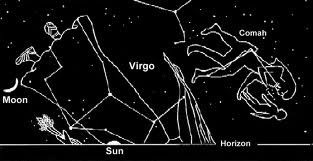
Malachi 4:2
But unto you that fear my name shall the Sun of righteousness arise with healing in his wings; and ye shall go forth, and grow up as calves of the stall.
The word “arise” in verse 2, is not only used of the Sun and light in general, but it and two of its derivatives occur in [Isaiah 60:1-3, Jer. 23:5]. As we have seen regarding Jer. 23:5, the planet Jupiter, the sedeq planet is linked with the Messiah, Jesus Christ the righteous zemach-branch, and is one of five primary Old Testament prophecies pertaining to this Branch, as the coming promised seed.
According to Matson, the basic idea is that the Pyramid complex is a map of the heavens at a time near the return of Christ. The pyramids show what is to be at meridian (Al Nitak in Orion), while the causeways and the Great Sphinx are aligned east from the pyramids, showing the importance of the rising Sun or other stars rising in the east. The Figure 9 graphic above also shows the Sun in Leo with Orion on the meridian at dawn while simultaneously, Sirius is at its lowest point just above the horizon. As we will see in Part 2 of this blog, the role of Sirius, the brightest star in the heavens, tells a key aspect of the story regarding the fallen Prince and Morning Star.
The point for Matson, was to find a candidate for an alignment on Rosh Hashanah with Orion’s meridian alignment at dawn. Since Rosh Hashanah begins at sunset and signs precede events, it is logical for Rosh Hashanah to begin at sunset on the 20th of September, which then puts Rosh Hashanah on September 21st. This also fits the astronomical scene for the precedent of these events, on Rosh Hashanah at Christ’s birth on Sept. 11th, 3 BC.
With Sept. 21st as the Autumn Equinox, coinciding with Rosh Hashanah and the meridian alignment of Al Nitak at dawn, could Rosh Hashanah be the real factor? The answer to Matson’s key question here is found not only in the heavenly signs surrounding the birth of Christ, but also the history and meaning of Rosh Hashanah. This Hebrew Holiday commemorates God’s Creation of the World, marking the start of a 10-day period called the Days of Awe, a time of repentance culminating in Yom Kippur– the Day of Atonement. Rosh Hashanah originated as an OT royal enthronement ritual, while the “Day of Judgment” elements of the holiday surfaced later. In spite of Rosh Hashanah being the seventh month, it came to designate the New Year. A further significance of Tishri as the seventh month, is found in its consideration as the Sabbath of the year. Blasts on the shofar horn, are the most potent symbol of the holiday. The significance of shofar blasts is alluded to in recalling the Binding of Isaac in [Gen. 22]. The story and the shofar serve as reminders of God’s Covenant with His people-Israel, carrying with them the message of hope, looking forward to the sacrifice and return of Christ. Key aspects of the origins of Rosh Hashanah as the King’s enthronement ritual are found in the 2 Chronicles record below.
We have pointed out in previous blogs, how the dual significance of the Rev. 12:1-2 prophecy, applies not only to the birth of Christ, but to his victorious return also! Even as heavenly signs specifically marked the birth of Jesus Christ, supporting the witness of God’s Word, so we have seen similar sky signs marking the Lord’s Return.
Even as these Rev. 12 heavenly signs were replayed in 2017, we will find similar signs the years 2028, and 2047.
As we have noted in our study of the Blood Moon Tetrad 0f 2014-2015, Blood Moons embody key aspects of the heavenly signs that occur “before that great and terrible day of the Lord comes;” [Joel 2:28-32]. The Blood Moon Lunar and Solar Eclipses in 2014, along with the Blood Moons and Solar Eclipses on the Lord’s Feasts and Holy days in 2015 are highly significant prophesies before our eyes, marking the end of days, and to the victorious return of our Lord Jesus Christ. A precursor for the King’s coronation as the king stands next to his pillar, is found in 2 Chronicles 23.
Figure 11. The Temple at Jerusalem with the two pillars of Jachin and Boaz at the entrance.
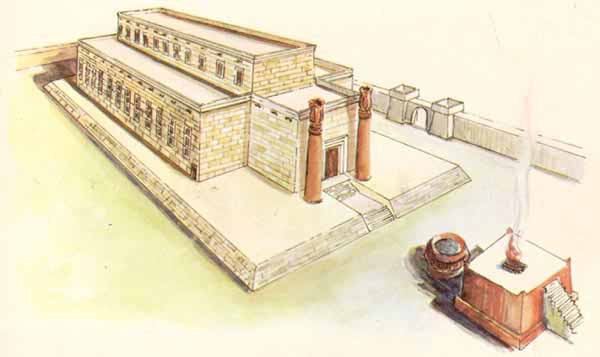
2 Chron. 23:11-14 11 Then they brought out the king’s son, and put upon him the crown, and gave him the testimony, and made him king. And Jehoiada and his sons anointed him, and said, God save the king. 12 Now
when Athaliah heard the noise of the people running and praising the king, she came to the people into the
house of the Lord: 13 And she looked, and, behold, the king stood at his pillar at the entering in, and the princes
and the trumpets by the king: and all the people of the land rejoiced, and sounded with trumpets, also the singers with instruments of musick, and such as taught to sing praise. Then Athaliah rent her clothes, and said, Treason, Treason. 14 Then Jehoiada the priest brought out the captains of hundreds that were set over the host, and said unto them, Have her forth of the ranges: and whoso followeth her, let him be slain with the sword. For the priest said, Slay her not in the house of the Lord.
2 Chron 23:13 puts this “pillar at the entering in,” and if this is entrance of the temple, then we have a reference to the Temple’s great ornamental pillars of brass called Jachin and Boaz. This agrees with the New Bible Dictionary which states: “The entrance to Solomon’s Temple was flanked by two gigantic bronze pillars, [I Kgs 7:15-22]. It was apparently by one of these that the king stood on ceremonial occasions [II Kings 23:3, II Chron. 23:13].” In II Chron. 34:31, King Josiah stood in his place (*H5977–omed) and made a covenant before the Lord to keep His commandments. The word translated “place” has the same Hebrew root [*H5975–amad] as the word “pillar” above. 24 The King’s rule was blessed in the degree and to the order, where he kept the Covenant of God’s Word in his rule, indicated in the names of the temple pillars.
1 Kings 7:21 And he set up the pillars in the porch of the temple: and he set up the right pillar, and called the name thereof Jachin: and he set up the left pillar, and called the name thereof Boaz.
According to the New Bible Dictionary in reference to the significance of the names Jachin and Boaz; “the names may be the first words of oracles giving power to the Davidic dynasty: perhaps ‘Yahweh will establish (yakin) thy throne forever’ and ‘In the strength (beoz) of Yahweh shall the king rejoice‘.”25 Thus, as the kings of Israel stood in their place, by their pillar in the temple during the coronation ceremony, so the coronation of the King of kings, seen in the stellar announcement of the birth of Jesus Christ, also marked by one of the four celestial pillars of heaven. In the first phase of the Lord’s appearances on earth, fulfilling Rev. 12:1-2 in the birth of Christ, we can see in the Fig. 13 Virgo image below, the sufferings of Christ are emphasized indicating the primary purpose of his ministry to Israel, as the one-time embodiment of the Passover lamb sacrifice for the sins of Israel. This is detailed in the graphic taking note of the intersection of the Ecliptic and the Celestial Equator. This intersection is one of the Four Corners, or literal Pillars of heaven, also called Cardinal Points which “square the circle” of the Ecliptic, the circle of the zodiac. The intersection point is right at Virgo’s feet, marked by the New Crescent Moon opening the New Year on Rosh-Hashanah, with the birth of Jesus Christ. As the Celestial Equator extends to the horizon it marks the Star Spica [Al-Zemach], the branch and offspring of God the Father, while under Virgo’s feet it bisects the sign Libra. In the Hebrew Zodiac, Libra symbolizes the price of redemption being paid by the Lord’s sacrifice. This puts the focus on the purpose of Christ’s ministry to Israel, and the sufferings he had to endure to pay this price of redemption, not only for Israel, but all mankind. The woman’s promised seed is called “the branch” identified with the star Spica in the following references; [Jer. 23:4-6, Jer. 33:14-18, Zech. 3:8].
Figure 12. The Scales of Libra
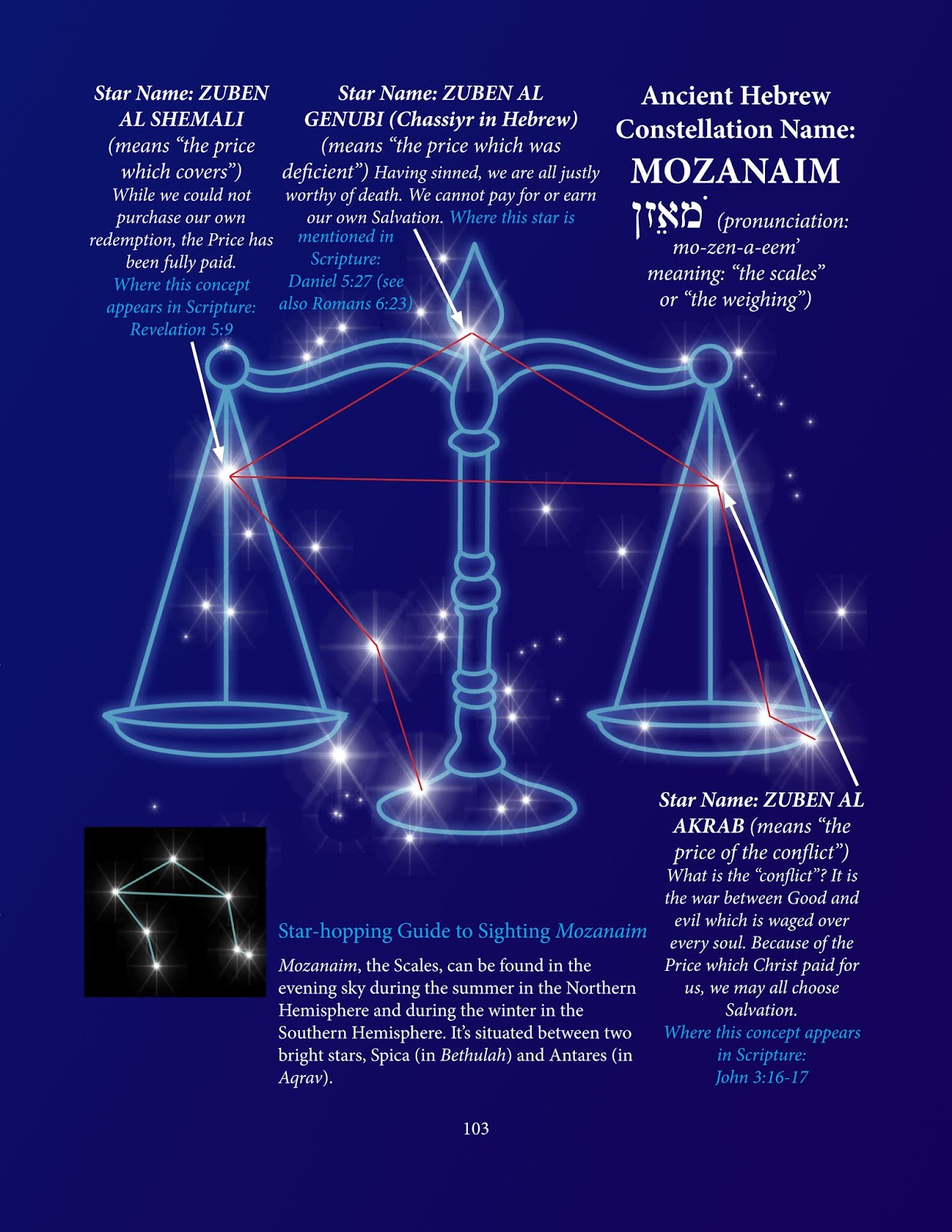
There are numerous legal requirements that Jesus Christ had to fulfill if every aspect of the Law was to be upheld as Christ stated, [Matt. 5:18]. In order for Jesus Christ to fulfill the OT law as the legal sacrifice for Israel and all mankind, he had to keep all stated “ordinances of Passover,” [Num. 9:12]. Without the shedding of blood there is no remission of sin, [Heb. 9:22] and only Christ had the sinless and innocent blood qualifying as the perfect sacrifice to redeem mankind. Even Judas after betraying Jesus confessed: “I have sinned in that I have betrayed the innocent blood;” [Matt.27:4]. This condition is clearly stated in Ex. 12:5, as a lamb without blemish, [I Pet. 1:18-19] with the key truth that it had to be a lamb of the first year, which discounts any hypothesis of a 3-year ministry of Christ. If these conditions were not met according to the standards of God’s Word, then those partaking in the Passover were cut off from Israel; [Ex. 12:15]. Even more critical was that Jesus himself had to fulfill all these conditions to the last detail, or mankind would remain in a sinful unredeemed state, before the liberating work of the Redeemer of mankind was “finished,” [John 19:30]. In this study our focus is on this important Biblical condition and legal requirement of the OT Law, that the Passover lamb had to be a male lamb of the first year, to fully redeem Israel. In the case of Jesus Christ, he did not fulfill this requirement until he became an adult male of the full age of 30 years old. The gospels record that
Jesus was recognized by John the Baptist as the “Lamb of God, who takes away the sin of the world,” in 27 AD, [John 1:29, 36] the 30th year since Jesus’ birth in 3BC. The truths told by the sign Libra, or the balances, tell us all men fall short of Jesus Christ paying the perfect redemption price for their brothers [Ps. 49:7-15], because all men are weighed in the balances and found wanting, except Jesus Christ; [Rev. 5:9]. This truth, is seen in the Figure 13 graphic below, as the celestial equator bisects both of Libra’s balances between the Moon and Virgo’s feet, while aligned with the setting Star Spica, marking Christ’s birth.
Figure 13. Sunset as seen from Palestine on September 11th 3 BC, with the Sun in Virgo and the Moon at her feet. 6 [Rev. 12:1-2]
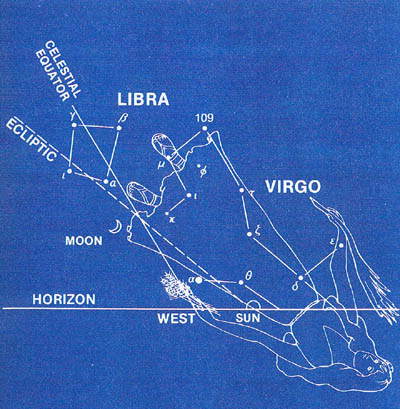
Isaiah 4:2 contains some wonderful details linking directly to the stars of the Constellation Virgo.
Isa. 4:2-3 In that day shall the branch of the LORD the beautiful and glorious, and the fruit of the earth shall be excellent and comely for them that are escaped of Israel. 3 And it shall come to pass, that he that is left in Zion, and he that remaineth in Jerusalem, shall be called holy, even every one that is written among the living in Jerusalem:
The word “beautiful” in verse 2 above corresponds to the meaning of the star “Zavijava” in Virgo, a true trait of the promised seed of the woman. It is truly wonderful to witness the inborn symmetry of God’s Word, flowing from the divine revelation of the Gospel in the Stars, as the pattern of the Stars and the Scriptures unfolds in unison before our eyes. The 2nd phase of the Rev. 12:1-2 prophecy, does not pertain to the sufferings of Christ, but to his Glorious return to install his Millennial Reign, inheriting the throne of the Davidic dynasty marked by the Temple pillars Jachin and Boaz. The “glory” of the promised seed referred to in Isa. 4:2 is also foretold in one of the decans of Virgo known anciently as Coma, the desire of the nations. This was prophesied in God’s Word in Haggai 2.
Haggai 2:6-7 6 For thus saith the LORD of hosts; Yet once, it is a little while, and I will shake the heavens, and the earth, and the sea, and the dry land; 7 And I will shake all nations, and the desire of all nations shall come: and I will fill this house with glory, saith the LORD of hosts.
At this center point in history, at the celestial pillar of the Rosh Hashanah, with the Moon at Virgo’s feet, and the setting of the star Spica–Al Zemach, the moments of the birth of Jesus Christ were framed in the heavens. This was followed 3 days later, by the first celestial union of the triple coronation ceremony that took place, beginning in the first Jupiter-Regulus Conjunction in Leo, on Sept. 14th 3 BC. This occurred during the Feast of Tabernacles, which along with Passover divided the sacred calendar in half, reminding us of the luni-solar year evident in the cycle of Jubilees. This also is reflected in the Blood Moon Tetrad of 2014-2015, with these Blood Moons and Solar eclipses marking the holy feasts, with increasing intensity as we approach the end of days leading to the victorious return of Jesus Christ. Since a Blood Moon Tetrad was completed in 2015 as a celebration of Jubilees on the Hebrew Calendar, we should pay special attention to the crescendo that is being reached, in the compiled Blood Moons and heavenly signs, on the Lord’s feasts and holy days.
With a better understanding of the Great Pyramid Star Shafts and the message of specific stars highlighted by these shafts, we have a clear grasp of how the Great Pyramid [Isa. 19:19-21], witnesses to the Lord Jesus Christ the only begotten Son of God.
Isa. 19:19 In that day there will be an altar to the Lord in the heart of Egypt, and a monument to the Lord at its border. 20 It will be a sign and witness to the Lord Almighty in the land of Egypt. When they cry out to the Lord because of their oppressors, He will send them a savior and defender, and he will
will rescue them.
In Part 2 of this study, we will consider in greater detail the planetary alignments marked by the Ascending and Descending passages of the Great Pyramid around the Rosh Hashanah date of 2017, as they relate to the master-plan of the Giza Plateau. along with Job’s record of Sirius the Dog Star as it tells the rest of the story concerning the fallen Morning Star, whose former seat is now occupied by Christ.
I am truly thankful for all our friends and readers as we stand together in the prevailing spiritual light of God’s Word, ready to help those who are looking for a hand of protection and blessing over and above the darkness of this world. Be that hand for someone today!
God Bless!
Rene’

Footnotes
1. Witness of the Stars, p. 58, E.W. Bullinger
2. IBID, p. 54
3. IBID, p. 127
4. IBID
5. Mazzaroth-Frances Rolleston
6. Gospel in the Stars, p. 116, Joseph Seiss
7. IBID
8. Witness of the Stars, p. 152, E.W. Bullinger
9. The Orion Mystery, p. 134, Robt. Bauval
10. The Mystery of the Sphinx, p. 284. From measurements given by Graham Hancock and Robert Bauval.
11. Figure 7. Star Shaft Alignments of the Great Pyramid, picture credit, Daniel Matson [https://watchfortheday.org/signsoftheend/giza2024.html]
12. Secrets of the Great Pyramid, Peter Thompkins, p. 86
13. Secrets of the Great Pyramid, Peter Thompkins, p. 87.
14. Burnham’s Celestial Handbook, p. 863. Robert Burnham
15. IBID
16. The Dawn of Civilization, Gaston Maspero
17. The Orion Mystery, p. 279, Bauval and Gilbert
18. Star Lore Myths Legends and Facts, p. 409 William Tyler Olcott
19. IBID, ppg. 408-409
20. IBID, p. 420
21. [https://watchfortheday.org/signsoftheend/giza2024.html]
22. Figure 9. picture credit; [http://myblog.robertbauval.co.uk/]
23. [https://watchfortheday.org/signsoftheend/giza2024.html]
24. Strong’s Concordance, [H5975] James Strong.
25. Tyndale’s New Bible Dictionary, p. 545, on Jachin and Boaz.


